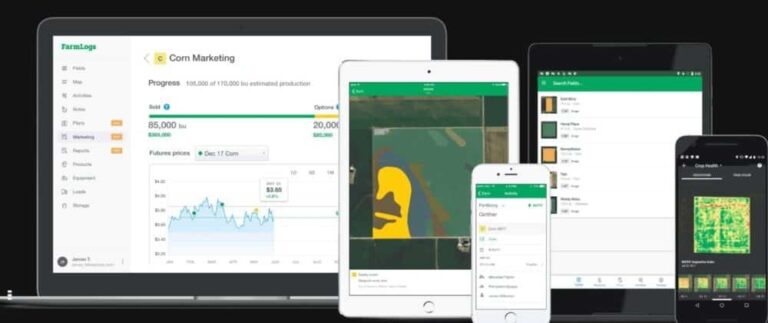In the world of agriculture, effective farm inventory management is crucial for the success and profitability of a farming business. Farmers must have a deep understanding of various aspects of farm management in order to produce high-quality products efficiently. Managing farm inventory involves keeping track of all the resources, inputs, and materials required for agricultural production. This process ensures that farmers have the right amount of supplies on hand at all times, preventing stockouts or excess inventory that can lead to unnecessary costs.
What is Farm Inventory Management?
Understanding Farm Inventory Management
Farm inventory management is the process of overseeing and controlling all the resources and inputs needed for agricultural production. This includes seeds, fertilizers, pesticides, machinery, equipment, livestock, and other essential items. Effective inventory management ensures that farmers have the right quantity of each item on hand when needed, without overstocking or running out of critical supplies. By maintaining accurate inventory records and implementing efficient tracking systems, farmers can optimize their operations and maximize productivity.
Key Components of Farm Inventory Management
There are several key components involved in farm inventory management:
- Inventory Tracking: Keeping detailed records of all incoming and outgoing inventory items;
- Stock Replenishment: Ensuring timely replenishment of depleted stock to prevent disruptions in production;
- Quality Control: Monitoring the quality of inventory items to maintain product standards;
- Forecasting Demand: Predicting future demand for inventory items based on historical data and market trends;
- Cost Management: Minimizing costs associated with excess inventory, stockouts, and wastage.
Importance of Farm Inventory For Your Farming Business
Maintain Sufficient Stock Levels with Low Reorder Levels
One of the biggest challenges in farm inventory management is maintaining optimal stock levels while minimizing reorder points. Having too much inventory ties up valuable resources and can lead to spoilage or obsolescence. On the other hand, running out of critical supplies can disrupt operations and result in lost revenue. By using an automated inventory management system, farmers can calculate the minimum stock levels required for each item and set reorder points to ensure timely replenishment.
Automated Stock Tracking Removes Tedious Inventory Management Tasks
Manual inventory management processes, such as using spreadsheets, can be time-consuming and prone to errors. Tracking stock movements, updating inventory records, and reconciling discrepancies manually can be a tedious and inefficient process. By automating stock tracking with a farm inventory management system, farmers can streamline their operations, reduce human error, and save time and effort. Real-time visibility into inventory levels allows farmers to make informed decisions and respond quickly to changing demand.
Improve Operational Efficiency and Productivity
Effective farm inventory management is essential for improving operational efficiency and productivity. By having the right amount of supplies on hand at all times, farmers can avoid delays in production and minimize downtime. Accurate inventory records help in planning and scheduling tasks more effectively, optimizing resource allocation, and reducing waste. With better control over inventory levels, farmers can enhance overall efficiency, increase output, and meet customer demand more efficiently.

Benefits Of Using A Farm Inventory Management System
Enhanced Inventory Accuracy and Visibility
A farm inventory management system provides farmers with real-time visibility into their inventory levels, locations, and movements. By using barcoding or RFID technology, farmers can track inventory items accurately and efficiently. This helps in reducing errors, eliminating stockouts, and preventing overstocking. With improved inventory accuracy, farmers can make better-informed decisions, reduce carrying costs, and improve overall operational efficiency.
Streamlined Order Fulfillment and Procurement
An automated inventory management system streamlines the order fulfillment process by providing farmers with instant access to inventory data. Farmers can quickly identify available stock, track orders, and manage deliveries more effectively. By integrating procurement processes with inventory management, farmers can optimize purchasing decisions, negotiate better prices with suppliers, and reduce lead times. This results in cost savings, improved supply chain management, and enhanced customer satisfaction.
Data-driven Decision Making and Reporting
A farm inventory management system generates valuable insights and reports that help farmers make data-driven decisions. By analyzing inventory data, farmers can identify trends, forecast demand, and optimize stocking levels. Customizable reports provide visibility into inventory turnover rates, carrying costs, and profitability metrics. This enables farmers to monitor performance, identify areas for improvement, and implement strategies to enhance efficiency and profitability.
Conclusion
In conclusion, effective farm inventory management is essential for the success and sustainability of a farming business. By maintaining sufficient stock levels, automating stock tracking, and improving operational efficiency, farmers can optimize their operations, reduce costs, and increase productivity. Investing in a farm inventory management system offers numerous benefits, including enhanced inventory accuracy, streamlined order fulfillment, and data-driven decision-making. By leveraging technology and best practices in inventory management, farmers can achieve greater efficiency, profitability, and competitiveness in the agricultural industry.











